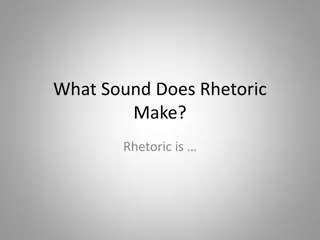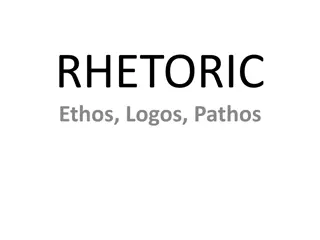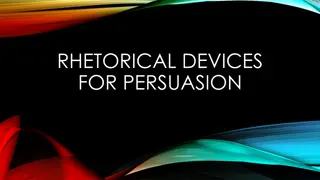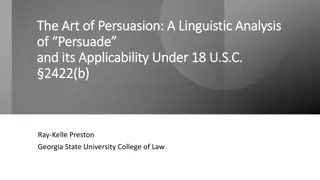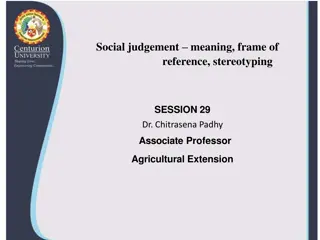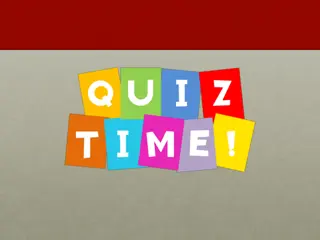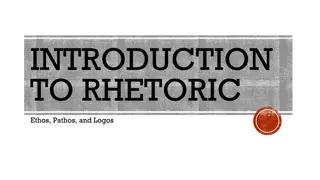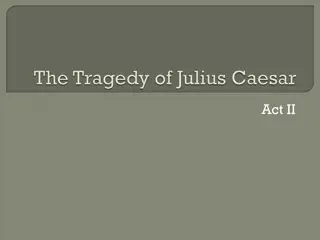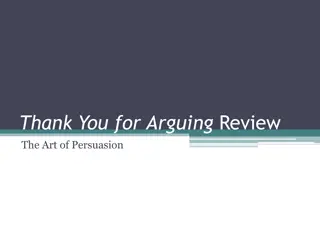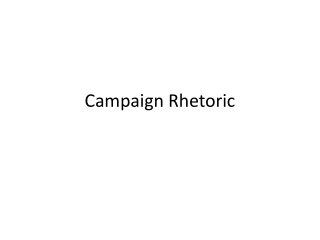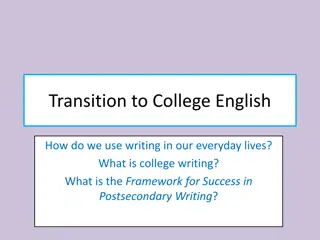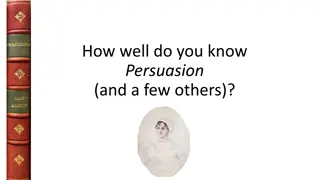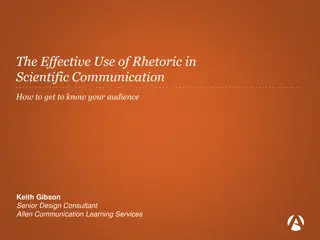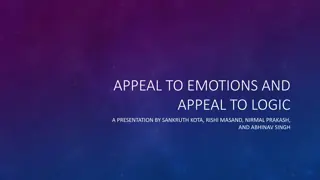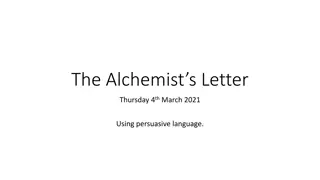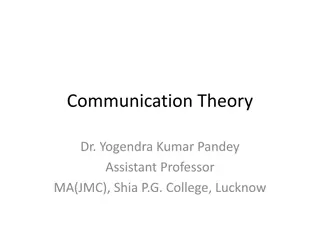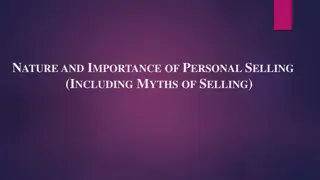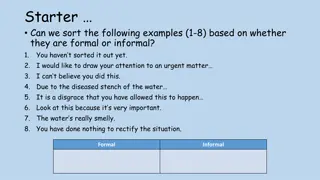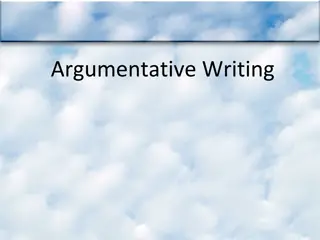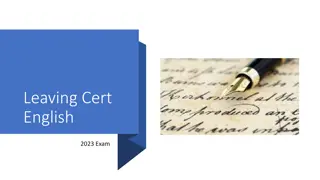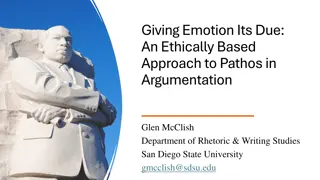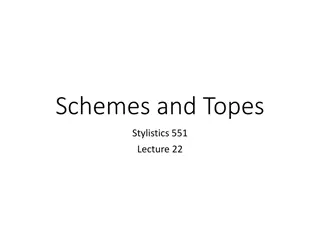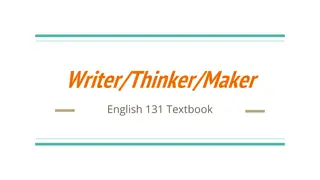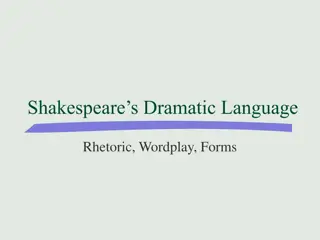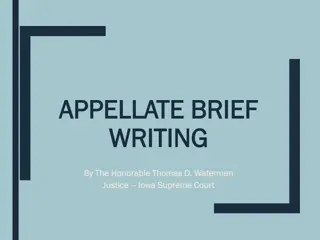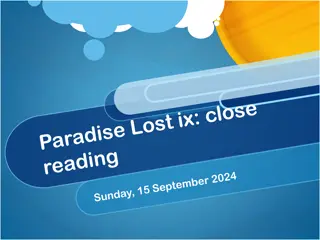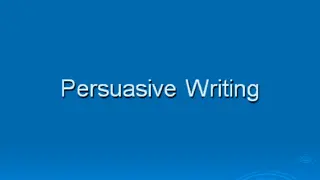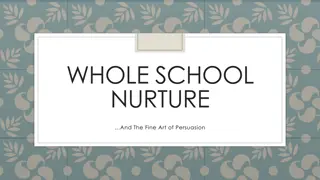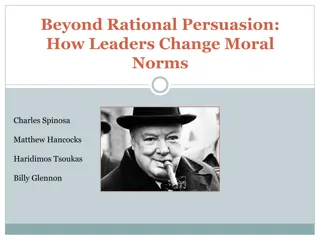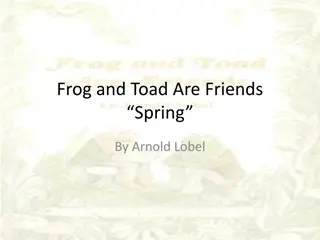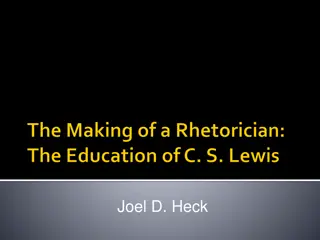Understanding Rhetoric and Persuasion Techniques
Rhetoric is the art of effective speaking and writing, encompassing persuasion techniques like PATTR analysis, Aristotelian appeals (Pathos, Logos, Ethos), and understanding speaker-audience dynamics. Logos appeals to logic, Ethos to ethics, and Pathos to emotions, with an important focus on audience engagement and message delivery in persuasive communication.
Download Presentation

Please find below an Image/Link to download the presentation.
The content on the website is provided AS IS for your information and personal use only. It may not be sold, licensed, or shared on other websites without obtaining consent from the author. Download presentation by click this link. If you encounter any issues during the download, it is possible that the publisher has removed the file from their server.
E N D
Presentation Transcript
Rhetoric is the study of effective speaking and writing and the art of persuasion. Persuasion
P.A.T.T.R. Rhetorical Analysis
PATTR is a strategy used to analyze and identify persuasion within writing. Students should memorize this acronym to help with understanding rhetorical devices used within any writing. What is PATTR?
P-Purpose A-Audience T-Theme T-Tone R-Rhetorical Devices PATTR stands for
Aristotelian Appeals: Persuasion, according to Aristotle and the many authorities that would echo him, is brought about through three kinds of proof (pistis) or persuasive appeal: Pathos- Emotional appeal Logos- Logical appeal Ethos- Ethical appeal Question: What appeals did the author use persuade the audience? P-Purpose
Logos Appeals to the head using logic, numbers, explanations, and facts. Through Logos, a writer aims at a person's intellect. The idea is that if you are logical, you will understand. Example- Wilkins is unqualified, because she does not meet the age requirement. P-Purpose
Ethos Appeals to the conscience, ethics, morals, standards, values, principles. Example- Wilkins is best, because she is the most honest and caring. P-Purpose
Pathos Appeals to the heart, emotions, sympathy, passions, sentimentality. Example- Wilkins is best, because she has overcome hardship. P-Purpose
Question- Who is the speaker addressing? A-Audience
Question 1- What is the message the speaker is presenting to the audience? Question 2- What does the speaker have to say about the message? T-Theme
Question- What are the details that contribute to the tone of the writing? (diction, word choice, syntax, etc.) T-Tone
Question- What are the rhetorical devices that were used? (rhetorical questions, call to action, etc.) R-Rhetorical devices
Juxtaposition is a poetic and rhetorical device in which normally unassociated ideas, words, or phrases are placed next to one another, creating an effect of surprise and wit: The apparition of these faces in the crowd:/Petals on a wet, black bought ( In a Station of the Metro by Ezra Pound). R-Rhetorical devices
Parallel structure (parallelism) refers to a grammatical or structural similarity between sentences or parts of a sentence. It involves an arrangement of words, phrases, sentences, and paragraphs so that elements of equal importance are equally developed and similarly phrased: He was walking, running, and jumping for joy. R-Rhetorical devices
Repetition is a device in which words, sounds, and ideas are used more than once for the purpose of enhancing rhythm and creating emphasis: . . . government of the people, by the people for the people . . . R-Rhetorical devices
Anecdotes, Stories, Metaphors These cast an issue in a favorable or unfavorable light, or can highlight or suppress certain aspects. They work by suggesting a likeness between a character and the listener, or a situation and the listener's. What is emphasized or suppressed is key. R-Rhetorical devices
A rhetorical question is a question which expects no answer. It is used to draw attention to a point and is generally stronger than a direct statement: If Mr. Ferchoff is always fair, as you have said, why did he refuse to listen to Mrs. Baldwin s arguments? R-Rhetorical devices
DUE DATE: March 23rd Read the following speeches: 1.http://www.americanrhetoric.com/speeches/jessicalynchopenin gstatement.htm 2.http://www.americanrhetoric.com/speeches/nelsonmandelainau guralspeech.htm 3.http://www.americanrhetoric.com/speeches/philknightjoepatern omemorial.htm - Choose one to analyze. Use your PATTR analysis sheet. - Be able to discuss each of the speeches. TOPIC: Qualities of a Hero PreAPASSIGNMENT



